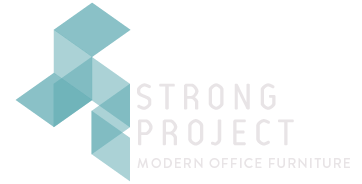Consider how much time we spend at the office and the emphasis that many of us put on wellness. It’s no wonder that we expect more from our workplace design than uniform rows of cookie-cutter desks, outdated cubicles, and open unintentional spaces. Anyone who’s worked in that environment likely feels triggered by the sheer mention, and for good reason. Gensler’s Research Institue’s recent study talked about what employees want out of an office. These studies help them and others discover elements that impact their productivity, ability to collaborate, and overall well-being. This valuable information proves why workplace design matters.
What they discovered might be a little surprising: they want an office where they can focus and do their work.
Primarily, professionals are looking for an office design that helps them focus. This appears to have become the most important reason employees come to the office. They want their time in the office to be purposeful.
Professionals don’t just desire a place to complete their work; they expect them.
That’s not to say employees wouldn’t want turn-down service and a mini-bar, but they do want and expect an environment that supports their jobs. A place that is comfortable, relaxed, and thoughtful, but still remains intentional and functional.
Respondents say they would value a “new mix of work experiences”.
Three Elements for Productive Employees
To thoughtfully design an office, you don’t have to start with a complete overhaul. You can make changes in stages beginning with what’s affordable for you, but also what’s most important to your current staff. Ask them, “What would you like to have? What would inspire you to come to work?” Ask them why the workplace design matters to them. You may be surprised which items mentioned in Gensler’s study mean the most to your team.
1. Intentional offices
In business today, 56% of time spent in the office is for hybrid meetings and requires tech to support their needs.
Collaboration office furniture provides a creative, relaxed environment where team members can come together for the next joint meeting or impromptu brainstorming session. Collaborative spaces equipped with the proper technology can provide functional and adaptive spaces. Workers report that a better quality office design would improve their experience in the workplace.
2. Flexible Furniture
The study showed that 34% of time spent in the office is on individual work. They say they can work better when they have an environment that supports both collaborative and individual work.
One of the most popular and useful options is for individual workspaces in office phonebooths and private areas where they’re able to work undisturbed. Office phone booths allow employees to enjoy the benefits of an individual workplace within an office. An ergonomic furniture solution, office phone booths can shield employees from noise and other distractions.
3. Collaboration
Humans need spaces for creative group work.
The study shows both collaborative and virtual collaborative spaces are some of the most effective and necessary spaces in the workplace. Survey respondents have a need for collaborative elements in the office. What management and business owners can learn is that workers require intentional spaces. Collaborative spaces need to be more than just an open room. The office design matters and should be functional and purposeful.
3. Modern Cubicles and Private Workspaces
“Cubicle farms” are passe. Previously, they were gray with tall panels that you couldn’t look over or around, making collaboration impossible. The modern cubicle is a vibrant and uplifting addition to the office. With styles ranging in configurations, colors, layouts, and customizable details and finishes, we have whatever you and your employees need to get the job done efficiently and safely at StrongProject.
As we return to the office the need for private workspaces where employees can complete focused work can’t be overlooked.
The Way We (Should) Work: Adaptability and Flexibility
The top two elements that professionals expect from the next company they work for are individual, private spaces as well as collaborative spaces. With these needs, it might appear difficult to create a healthy mix of work experiences, but the right workplace design can make this possible. Factor in the expectations of a kinder and more comfortable place to work and business owners have their work cut out for them.
The times, they are changing. Professionals don’t just desire different work experiences; they expect them. However, if businesses want to succeed, attract top talent, and keep their staff happy and productive, they’ll need to keep up with the times, and better yet, stay ahead of them. Put employee well-being at the forefront, and your bottom line will profit as much as those who help produce the revenue. The success of a company is based on the success of the employees. That is why workplace design matters.
Redefining Workspaces: The Comprehensive Guide to Hybrid Workplace Design








